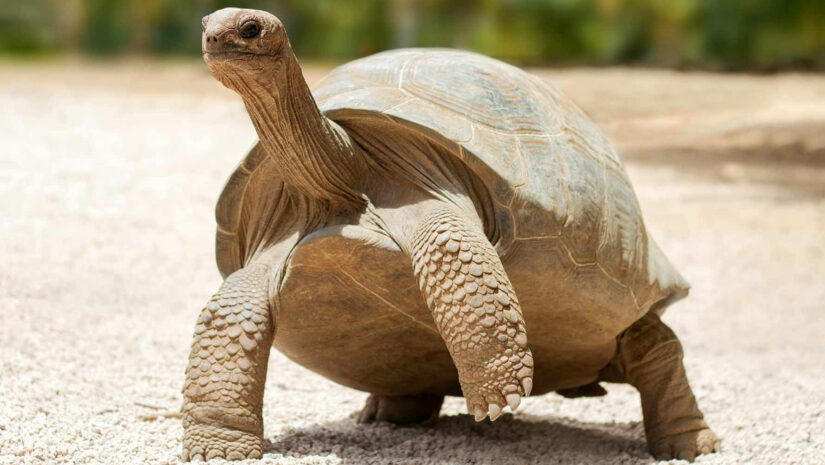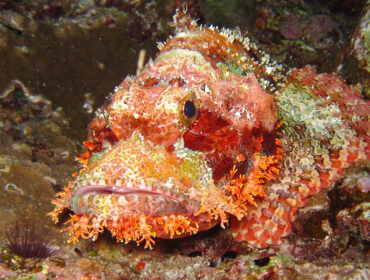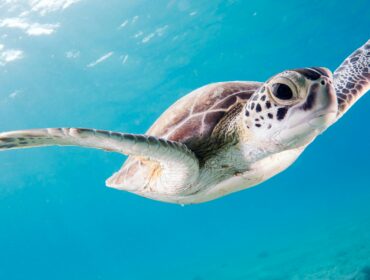The giant Galápagos tortoise is perhaps the most famous native animal that lives in the Galápagos Islands. You may find them being bred and rescued in other parts of the world, but it is this popular Ecuadorian wildlife destination that they call home.
But aside from being amazingly large, there are a whole lot of other interesting facts about these ancient, gentle giants. Find out more about them below.
Interesting Facts About the Galapagos Island Tortoise

They’re the biggest tortoises in the world
If you find their size remarkable, it’s because it is. Galápagos tortoises are actually the biggest in the world, with the adult length of males reaching more than 5 feet long and 4 to 5 feet wide. They can also weigh more than 500 pounds. In fact, the largest recorded Galápagos tortoise was almost 6 feet long and 919 pounds heavy. Females, however, are generally smaller and weigh an average of 250 pounds.
They’re also the oldest
The Galápagos tortoises are one of the longest living species of vertebrates. Their average life span is over 100 years, although the oldest known tortoise was 176 years old when she passed away in 2006. This same tortoise is believed to have been among the specimens that were collected by Charles Darwin from the Galápagos Islands back in 1835.
They move faster than you think
It’s pretty common knowledge that tortoises move extremely slowly. Galápagos tortoises are no exception, although they can move faster than usual (13 km in just two days) during the males’ mating season.
The Galápagos Islands is named after them
Galápagos tortoises obviously live in the Galápagos Islands, just off the coast of Ecuador. What many don’t know, however, is that the islands were named after the tortoises and not the other way around.
It all started when Spanish sailors discovered the area in 1535 and found tortoises everywhere. They then decided to name the islands after galapago, the Old Spanish word for saddle, due to the shape of the tortoise shells. People even used to ride these saddleback tortoises before learning that it’s bad for these giant reptiles.
Their shell is not solid
Although Galápagos tortoises are heavy, it’s not mainly because of their shell. Their shells are actually made up of honeycomb-shaped air chambers, making their load significantly lighter—for them, at least.
The shell can’t be removed
Here’s another fact that may come as a surprise to many: the Galápagos tortoises’ shells are part of their skeleton and can’t be removed from their bodies. It grows with the tortoise and won’t be fully developed until it is about 20 to 25 years old. This ensures that they will always have a space that they can hide their heads and legs in whenever they feel frightened or threatened by predators.
They fight rather peacefully
You’d think that a giant tortoise fight would be vicious and relentless given their size, but they also prove to be quite modest even in this area. The males would simply glare at each other, open their mouths, and raise their heads as high as they can. No matter the body size, the tortoise with the highest head wins. The losing tortoise will then suck his head in and walk away.
They can go for a year without eating
Believe it or not, Galápagos tortoises can survive past a whole year without food or water. During this time, their bodies will slowly break down their body fat, which in turn produces water that they can use up to survive. It also helps that they have an extremely low metabolism (are you surprised?) and can store gallons of water in their bladders to keep themselves hydrated during hot weather.
They are born in pee-soaked sand holes
Baby Galapagos tortoises are born in 12-inch deep sand holes, which their mothers pee in to keep the sand from collapsing on the eggs. Fortunately, the eggs are hard-shelled, so it’s not such a gross condition for the babies to be in. A Galápagos tortoise mother can also lay up to 16 tennis ball-sized eggs at a time.
Their gender is determined by temperature
Galápagos tortoise eggs will hatch after 4 to 8 months, and their mothers simply have to keep the sand warm if they want more females and cool if they want more males. They probably wouldn’t “plan” their pregnancy, but it’s very useful information for breeders who want to have more female tortoises.
You can tell their sex from their undershell
The easiest way to tell whether a Galápagos tortoise is a male or a female is to check its undershell. Females have undershells that are either curved outward or flat while males’ are curved inward. These characteristics help make mating and breeding easier. However, it can be difficult to tell if you check before they reach sexual maturity at 15 to 20 years old.
They’re sleepyheads
As you can already tell, Galápagos tortoises live pretty chill lives. They spend a lot of time basking in the sun and sleep nearly 16 hours a day. There’s no fixed schedule though, as they can take naps both at night and on rocks or beaches under the sun.
Their shell shape depends on the environment
The shape of a Galápagos tortoise shell changes to suit the environment that it is born in. Those born in wet, humid islands have dome-shaped shells, which keeps their head low and limits their food sources to grass, fallen leaves, and other ground-level plants. Those born on drier islands have saddleback shells that feature raised rims to allow them to raise their necks higher and feed from bushes or low-hanging branches. Shell color doesn’t vary much, regardless of where the tortoise is born.
They have set habits
Galápagos tortoises live monotonous lives. They eat, nap, and travel at set times; they also travel along the same routes. The only time that they would change their routine is when there is potential danger, such as harsh weather or lurking predators.
They are endangered
Despite their ability to protect themselves from natural predators, Galápagos tortoises are considered endangered after centuries of being hunted for their meat. On top of that, they are in constant competition with rats, dogs, pigs, and goats for food.
The number of tortoise kinds has been reduced from 15 to 11 since Charles Darwin visited the Galápagos islands in 1835. There are also reportedly 15,000 Galápagos tortoises left in the wild, despite captive breeding and conservation efforts.




